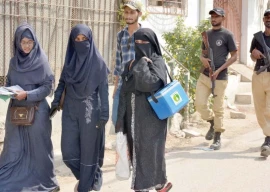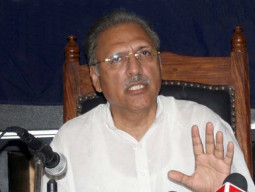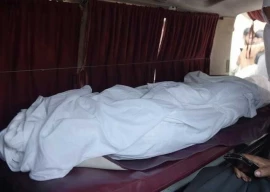
Up to four dozen buffaloes and calves have died so far in six villages in Pithoro town after catching the hemorrhagic septicemia virus. Many more may be infected and vets from the directorate of animal husbandry only started conducting proper diagnosis on Monday.
The villagers call the illness ‘Ghoghri’. “The animals die less than a day after symptoms appear,” said Munawar Kolaci, a resident of Saleh Sand village. He added that the infected animals face difficulty in breathing and boils develop in their mouths.
Noor Ahmed Soomro, a vet from the livestock department, said that the virus often appears during rain and harvest seasons. The virus is caused by a strain of avian cholera. “The animals find it painful to breathe, their metabolism is affected, they rapidly being to lose weight and then they die.”
An infected animal’s body temperature also increases to between 104 and 107 degrees. He said that timely vaccination can save an infected animal. Breeders should immediately quarantine sick animals and have their herd vaccinated.
The livestock department’s deputy director, Abdul Ghani Bajeer, told Daily Sindh Express that a team of vets started to survey the situation on Monday. “It’s too early to call it an epidemic like the one which hit peacocks in Thar.”He said the department released its disease forecast report over two months ago. “Breeders were informed about the impending danger but many did not pay attention and take precautions.”
However, villagers claimed that the department itself was not prepared to deal with the virus. “If they already knew that the virus would hit, then why were they not prepared to respond without wasting more than a week?” asked Moula Bux Arisar, who lives in Abdul Wahid Arisar village.
He said that it is difficult for breeders to carry their livestock to the vets. It is especially difficult for people who own a large number of animals to transport them as the costs are too high. Khalid Pali, a resident of Dhoro Naro village, claimed that despite their complaints about the dying animals, the government veterinarians have yet to take action.
In the desert areas of Umerkot, peoples’ livelihood depends on livestock. “We have suffered millions of rupees loss so far,” claimed Yaseen Arisar, a villager.
Published in The Express Tribune, September 28th, 2012.
1718870162-0/BeFunky-collage-(60)1718870162-0-405x300.webp)
1730504285-0/Martha-(1)1730504285-0-165x106.webp)















COMMENTS
Comments are moderated and generally will be posted if they are on-topic and not abusive.
For more information, please see our Comments FAQ